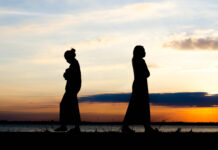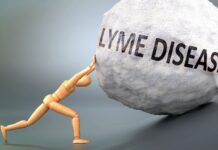I confess: Although I aim to be broadminded and egalitarian, in many situations I ultimately find myself to be unequivocally parochial and ethnocentric, no universalist by any means, despite my best aspirations. Translated into real-speak, what this means is—to be quite candid—when I hear that a bomb has exploded in Tasmania or India and killed dozens, even hundreds, I may flinch for a moment in shock and despair, but those feelings are fleeting. However, when I learn that a Palestinian terrorist attack has occurred in Israel, my knees buckle, my heart pounds, and I feel as if I will faint. A deep sense of doom shadows my day and tears continuously prick my eyes. I truly wish that I could be the type of person who resonates with the suffering of all humanity, but my heart is limited. MY TRIBE, MY PEOPLE, MY LAND. I voted for Trump only because I felt he would be better for Israel.
Obviously, we are all deeply connected to our landsmen, and it is only human nature to care more about their fates than strangers who are both physically distant and emotionally removed from our lives. I offer you these musings only to explain why I got so panicky last summer when I learned that the Zika virus was about to make landfall in Miami Beach. When it was confined to South America, I confess: I paid little heed to its existence. The photos of the babies born with microencephaly were of course heartbreaking, and any human being would be stirred by the photographs of those pathetic infants and the pitiable prospects they faced. But, I am ashamed to admit, despite the wrenching pictures, there was still a disconnect. Zika wasn’t happening to my people; it wasn’t happening any place where frum people reside. But when the CDC (Centers for Disease Control) and other scientists predicted its inevitable spread to Miami, my heart stopped. Now it was my tribe that was in danger, and my people had to be warned.
I spoke with Rechy Frankfurter, my preeminent editor, and she quickly agreed that Zika in Miami Beach was a cause for great concern. She gave me the “go ahead” and I metaphorically began to “pound the pavements” in search of the story. (Today, journalists use their phones and computers for interviews more readily than venturing outside, but I still use the antiquated expression to connote the comprehensive extent of my research.) I spent dozens of hours speaking with, among myriad others, the managing editor of The Miami Herald, a scientist who works at the CDC, medical researchers from various health departments in Florida, government officials, entrepreneurs whose businesses primarily rely on the frum winter trade, askanim who have worked hard to build the infrastructure of a growing and thriving year-round frum community, ordinary residents who have dug deep roots into Miami Beach and call it their permanent home; pulpit rabbis as well as people associated with the highly-regarded Miami Kollel. I collected up to 100 pages in notes. In general, I tend to go overboard on my research, but this time around I was particularly galvanized by one obsessive thought: lives could truly be at stake. Through other media outlets and the grapevine itself, the majority of frum people already knew about Zika; but I worried about the tiny minority that did not. What if the frum media was truly their sole source of information about the “outside world?” Didn’t we then have a moral obligation to bring the potential risks of Zika to their attention? So I plunged into a vortex of facts, rumors, and alternative universes of reality.





















